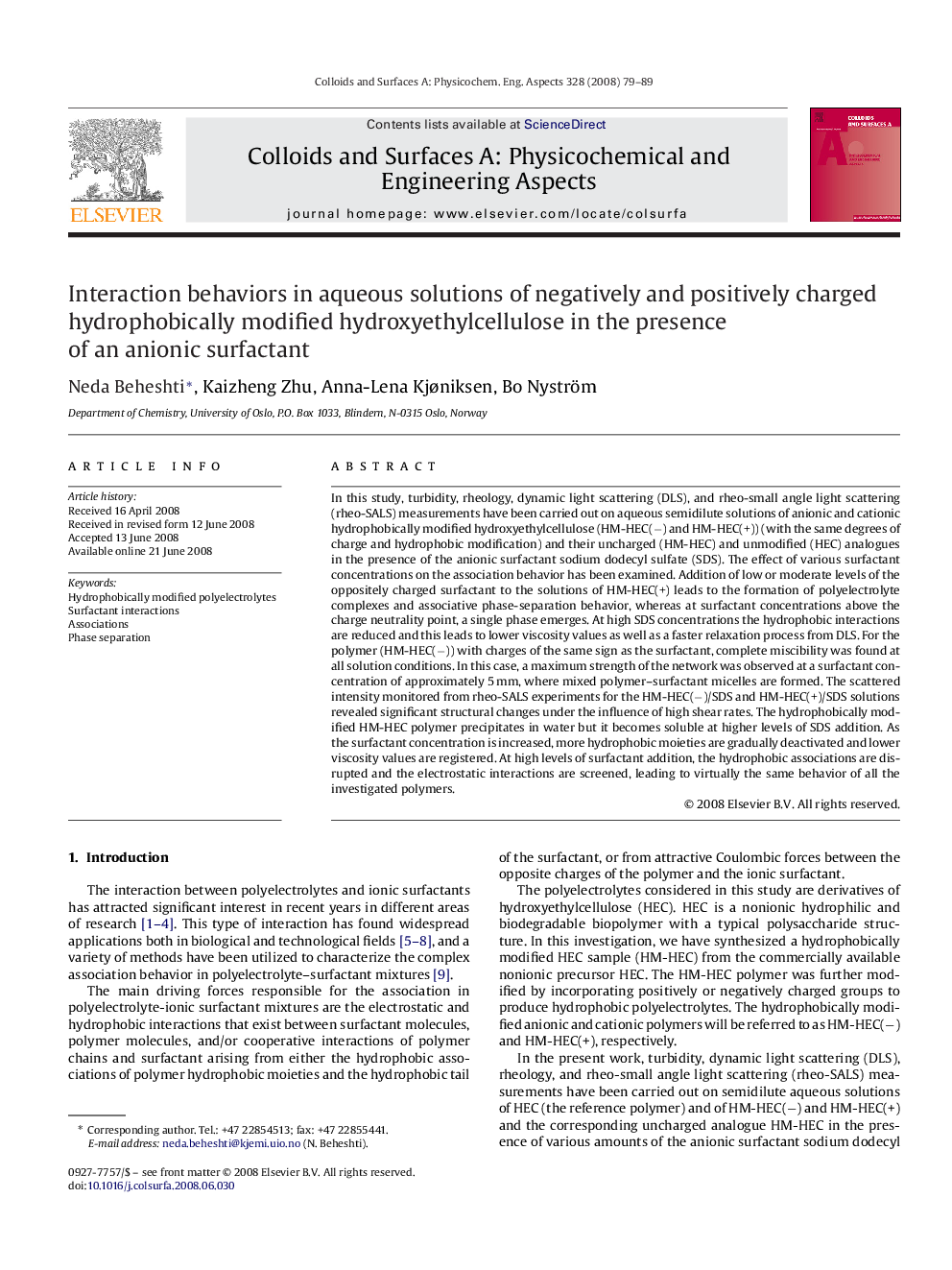| Article ID | Journal | Published Year | Pages | File Type |
|---|---|---|---|---|
| 596647 | Colloids and Surfaces A: Physicochemical and Engineering Aspects | 2008 | 11 Pages |
In this study, turbidity, rheology, dynamic light scattering (DLS), and rheo-small angle light scattering (rheo-SALS) measurements have been carried out on aqueous semidilute solutions of anionic and cationic hydrophobically modified hydroxyethylcellulose (HM-HEC(−) and HM-HEC(+)) (with the same degrees of charge and hydrophobic modification) and their uncharged (HM-HEC) and unmodified (HEC) analogues in the presence of the anionic surfactant sodium dodecyl sulfate (SDS). The effect of various surfactant concentrations on the association behavior has been examined. Addition of low or moderate levels of the oppositely charged surfactant to the solutions of HM-HEC(+) leads to the formation of polyelectrolyte complexes and associative phase-separation behavior, whereas at surfactant concentrations above the charge neutrality point, a single phase emerges. At high SDS concentrations the hydrophobic interactions are reduced and this leads to lower viscosity values as well as a faster relaxation process from DLS. For the polymer (HM-HEC(−)) with charges of the same sign as the surfactant, complete miscibility was found at all solution conditions. In this case, a maximum strength of the network was observed at a surfactant concentration of approximately 5 mm, where mixed polymer–surfactant micelles are formed. The scattered intensity monitored from rheo-SALS experiments for the HM-HEC(−)/SDS and HM-HEC(+)/SDS solutions revealed significant structural changes under the influence of high shear rates. The hydrophobically modified HM-HEC polymer precipitates in water but it becomes soluble at higher levels of SDS addition. As the surfactant concentration is increased, more hydrophobic moieties are gradually deactivated and lower viscosity values are registered. At high levels of surfactant addition, the hydrophobic associations are disrupted and the electrostatic interactions are screened, leading to virtually the same behavior of all the investigated polymers.
